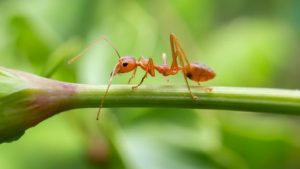 Our World
Our World  Our World
Our World  Movies and TV
Movies and TV The 10 Coolest Stars to Set Sail on The Love Boat
 History
History 10 Things You Didn’t Know About the American National Anthem
 Technology
Technology Top 10 Everyday Tech Buzzwords That Hide a Darker Past
 Humans
Humans 10 Everyday Human Behaviors That Are Actually Survival Instincts
 Animals
Animals 10 Animals That Humiliated and Harmed Historical Leaders
 History
History 10 Most Influential Protests in Modern History
 Creepy
Creepy 10 More Representations of Death from Myth, Legend, and Folktale
 Technology
Technology 10 Scientific Breakthroughs of 2025 That’ll Change Everything
 Our World
Our World 10 Ways Icelandic Culture Makes Other Countries Look Boring
 Our World
Our World 10 Ways Your Christmas Tree Is More Lit Than You Think
 Movies and TV
Movies and TV The 10 Coolest Stars to Set Sail on The Love Boat
 History
History 10 Things You Didn’t Know About the American National Anthem
Who's Behind Listverse?

Jamie Frater
Head Editor
Jamie founded Listverse due to an insatiable desire to share fascinating, obscure, and bizarre facts. He has been a guest speaker on numerous national radio and television stations and is a five time published author.
More About Us Technology
Technology Top 10 Everyday Tech Buzzwords That Hide a Darker Past
 Humans
Humans 10 Everyday Human Behaviors That Are Actually Survival Instincts
 Animals
Animals 10 Animals That Humiliated and Harmed Historical Leaders
 History
History 10 Most Influential Protests in Modern History
 Creepy
Creepy 10 More Representations of Death from Myth, Legend, and Folktale
 Technology
Technology 10 Scientific Breakthroughs of 2025 That’ll Change Everything
 Our World
Our World 10 Ways Icelandic Culture Makes Other Countries Look Boring
Ten Unexpected Discoveries Involving Vomit
Throwing up might seem like an unpleasant topic for a list, but chunder can be more intriguing than you might think. Scientists and experts have made many fascinating discoveries by examining people and animals as they heave.
Vomit has helped scientists in Ecuador discover a new species of ant, let researchers in Utah study prehistoric diets, and made a fortune for a fishing crew in Yemen, to name just a few. Isaac Newton even believed he could cure the plague using frog vomit. This list explores ten bizarre things we have learned thanks to the disgusting substance that is vomit. Read on, as long as you’ve got the stomach for it.
Related: Top 10 Really Weird Facts About Poop
10 Sea Cucumbers Fend off Predators by Vomiting from Their Rears
The animal kingdom is a crazy place. Creatures, great and small, have developed all sorts of wacky mechanisms to fend off predators. Without a doubt, one of the oddest of all is the sea cucumber, which strikes back against attackers by spraying them with gunky noodles.
Sea cucumbers expel their innards, known as Cuvierian organs, out of their rear ends to entangle predators. Strange as it sounds, it’s an effective method of defense. The stringy organs are made up of proteins similar to those found in spider silk, which help them cling to and neutralize marine attackers. In some cases, sea cucumbers have even been known to kill predators with their bizarre anal vomit.[1]
9 Shark in Australia Brings Up Spiked Echidna
The echidna, sometimes known as the spiny anteater, is a strange creature. This medium-sized Australian mammal is covered in barbed quills. Certainly not what marine biologist Nicolas Lubitz expected to come tumbling out of a tiger shark’s mouth.
Lubitz filmed the startling ejection while studying sharks off the coast of the Orpheus Islands. Echidnas are usually spotted in lakes and rivers, so it’s unclear why this one swam so far out into the ocean. But Lubitz reckons that discomfort from its barbs caused the shark to throw up.
“It’s very rare that [tiger sharks] throw up their food, but sometimes when they get stressed, they can,” he said. “In this case, I think the echidna must have just felt a bit funny in its throat.”[2]
8 Two Years to Work Out Why Woman Kept Being Sick
In 2023, medical experts published a report about one poor woman who couldn’t stop throwing up. It took doctors two years to uncover the cause of her illness. The 23-year-old was regularly in and out of hospital. At first, doctors thought that her symptoms—nausea, abdominal pain, and uncontrollable sickness—were down to a stomach condition. But nothing showed up on any scans.
So, how did the doctors finally diagnose her? After a urine test, the medics found out that she smokes cannabis regularly. Cannabis often helps reduce nausea, especially in low doses. However, in large quantities, the drug can actually lead to a condition called cannabinoid hyperemesis syndrome (CHS). After two years of no luck, doctors were able to diagnose the lady with CHS. Her persistent sickness faded away after she cut weed out of her life for good.[3]
7 House Fly Chunder Is Riddled with Disease
The common house fly poses a greater threat to your health than you might imagine. Fly innards are often a melting pot of viruses and bacteria. They pick up nasty diseases after feasting on garbage and feces. Flies also use vomit to dissolve their food. So if a little buzzing pest lands on something tasty, who knows what pathogens they might bring up?
Most people think of insects like mosquitoes or ticks as the major disease transmitters. But scientists are keen to point out that non-biting house flies can be just as harmful. In a 2017 study, researchers found over 200 pathogens inside adult house flies. At the height of the COVID pandemic, they were shown to be potential transporters of SARS-CoV-2. It’s why scientists recommend keeping the filthy critters away from your food and making sure that meals aren’t left outside for too long.[4]
6 Fossilized Spew Gives Scientists a Glimpse into Prehistoric Diets
In the murky depths of an ancient pond, Jurassic predators sometimes liked to chow down on tiny amphibians. How do we know this? From the preserved remains of prehistoric puke.
Scientists discovered fossilized chunder in the Morrison Formation in southeast Utah. This might sound like an odd find, but it allowed them greater insight into the diets of prehistoric beasts. They found chunks of tiny bones—some only three millimeters long—from frogs, salamanders, and various other unknown critters. The team isn’t sure what creature produced the vomit, but past evidence suggests bowfin fish as a likely source.
“This fossil gives us a rare glimpse into the interactions of the animals in ancient ecosystems,” explained Utah museum curator John Foster. “There were three animals that we still have around today, interacting in ways also known today among those animals—prey eaten by predators and predators perhaps chased by other predators.”[5]
5 Pungent Chunk of Whale Sick Sells for $1.5 Million
Ambergris. Unless you’re an expert in marine life, the word probably doesn’t mean much to you. It doesn’t look like much either—a strange waxy lump. But the substance, produced in the intestines of sperm whales, can fetch a pretty penny. In fact, one crew in Yemen recently hauled in a 280-pound (127-kilogram) lump worth around $1.5 million.
Whale vomit is highly pungent, but experts call it “floating gold” for its rareness and value. Ambergris is highly sought after by perfumers. The substance is used by brands like Lanvin and Chanel to create high-end fragrances.
The Arabic crew discovered their bizarre treasure in the stomach of a dead sperm whale. They knew something was odd about the carcass due to the intense odor and were pleasantly surprised at the expensive chunder inside. As one sailor described it to the BBC, “The smell wasn’t very nice, but it was worth lots of money.”[6]
4 New Species of Ant Turns Up in Frog Vomit

In 2016, scientists in Ecuador were thrilled to announce the discovery of a new species of ant. The tropical bug was spotted in the stomach of a fire-colored devil frog, known in Spanish as diablito. Sadly, scientists have only been able to find one specimen—and that one was dead. So little is known about the new species. But scientists believe they use their long mouths to catch food.
Wild frogs capture bugs from unexplored places that humans cannot reach. Using their spew as a tool for ecological exploration is more useful than you might imagine. Researchers flush out the frogs’ stomachs with water and analyze the results. As lead researcher Christian Rabeling told National Geographic. “Sometimes people think that our world is very well-explored. Nothing could be farther from the truth.”[7]
3 Isaac Newton Thought Toad Vomit Could Cure Plague
Sir Isaac Newton, one of the greatest minds in the history of science, had some barmy ideas about the plague. His unpublished notes reveal that the polymath thought powdered frog vomit would help drive away the disease.
On the topic of plague cures, he wrote, “The best is a toad suspended by the legs in a chimney for three days, which at last vomited up earth with various insects in it, onto a dish of yellow wax, and shortly after died. Combining powdered toad with the excretions and serum made into lozenges and worn about the affected area, drove away the contagion and drew out the poison.”
His offbeat ideas came to light in 2020 when the manuscript sold at auction for $81,000.[8]
2 Pig Puke Toxin Helps Identify Meteorite Origins
In 1929, staff discovered a Martian meteorite in the biology department of Purdue University. But no one in the college could explain how it got there. The mystery of the Lafayette meteorite left researchers scratching their heads for nearly a century. They thought it had been donated by a Black student. But no one was quite sure when or by whom. That was until 2022 when Glasgow scientist Dr. Aine O’Brien finally shed some light on the elusive donor.
Dr. O’Brien used mass spectrometry to identify organic compounds in the rock. Among the hundreds of chemicals, one stood out: a substance known as vomitoxin. Vomitoxin might sound revolting, but it occurs naturally in corn and wheat. The toxin is produced by fungi and can cause nausea if ingested in high doses, especially by pigs.
Dr. O’Brien studied the historic crop yields and fungi levels around Purdue University. With this, she traced the rock’s likely origins to two fireball sightings. One blazed across the skies in 1919, the other in 1927. She then scoured the yearbooks to find Black students enrolled in those years.
After two years of sleuthing, she narrowed the mystery donor to one of four candidates. Julius Lee Morgan, Clinton Edward Shaw, and Hermanze Edwin Fauntleroy all studied at Purdue around 1919, while Clyde Silance attended around 1927. Dr. O’Brien believes one of those men discovered the Lafayette meteorite in a pond and gifted it to the college. But she concedes we may never know the true story of how such a remarkable object came into the hands of the university.[9]
1 Shark Brings Up Tattooed Arm, Sparks Murder Invesrigation
An intriguing tale of tattoos, murder, and shark vomit. Attendees wandering around the Coogee Aquarium in Sydney on April 25, 1935, were shocked to see a tiger shark throwing up a human arm. A distinctive tattoo of two fighters identified the victim as James “Jimmy” Smith.
Jimmy was an amateur boxer, but he became known for his connections with Sydney’s criminal underworld. He and drug smuggler Reginald Holmes had recently fallen out over a scam. The last time Jimmy was seen alive, he was drinking and gambling with another seedy character, Patrick Brady.
At some point soon after, it is believed that Jimmy was murdered, his body chopped up, and thrown into Gunnamatta Bay as a “Sydney send-off.” A tiger shark gobbled up the arm, only to be caught and taken off to the aquarium.
Police were now becoming increasingly suspicious of Brady and Holmes. On May 20, a disturbed Holmes ventured out on his speedboat with a gun and tried to end his life. But he failed and ended up in a panicked police chase around the harbor. Holmes and Brady both blamed each other for the murder, but on the day of the court case, Holmes wound up with three bullets in his chest. Although many suspect Brady, the murder of Jimmy Smith remains unsolved.[10]








